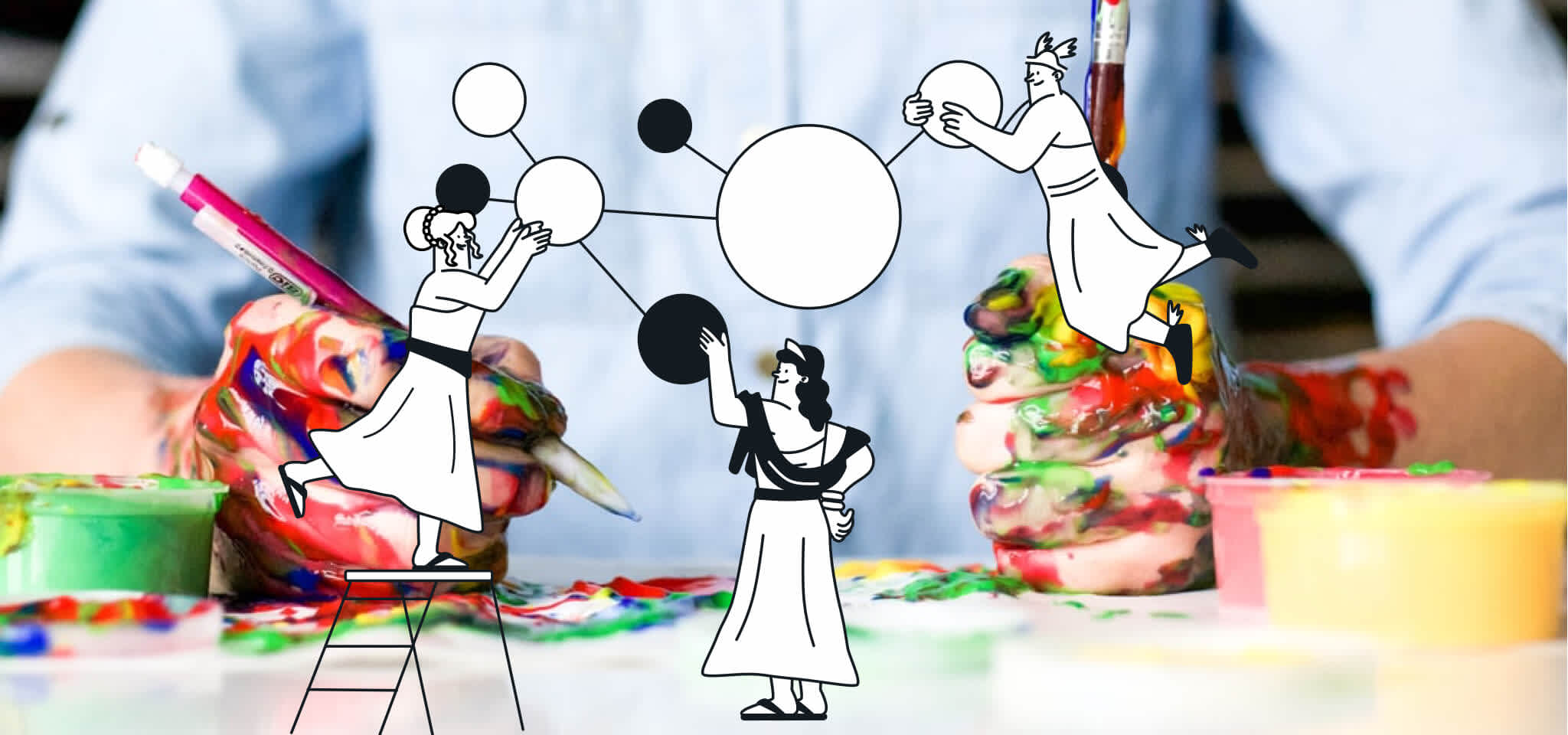Email best practices
How to use email for your brand storytelling
Email can help you build your brand's identity. Why don't you try out these tips for brand storytelling through email?
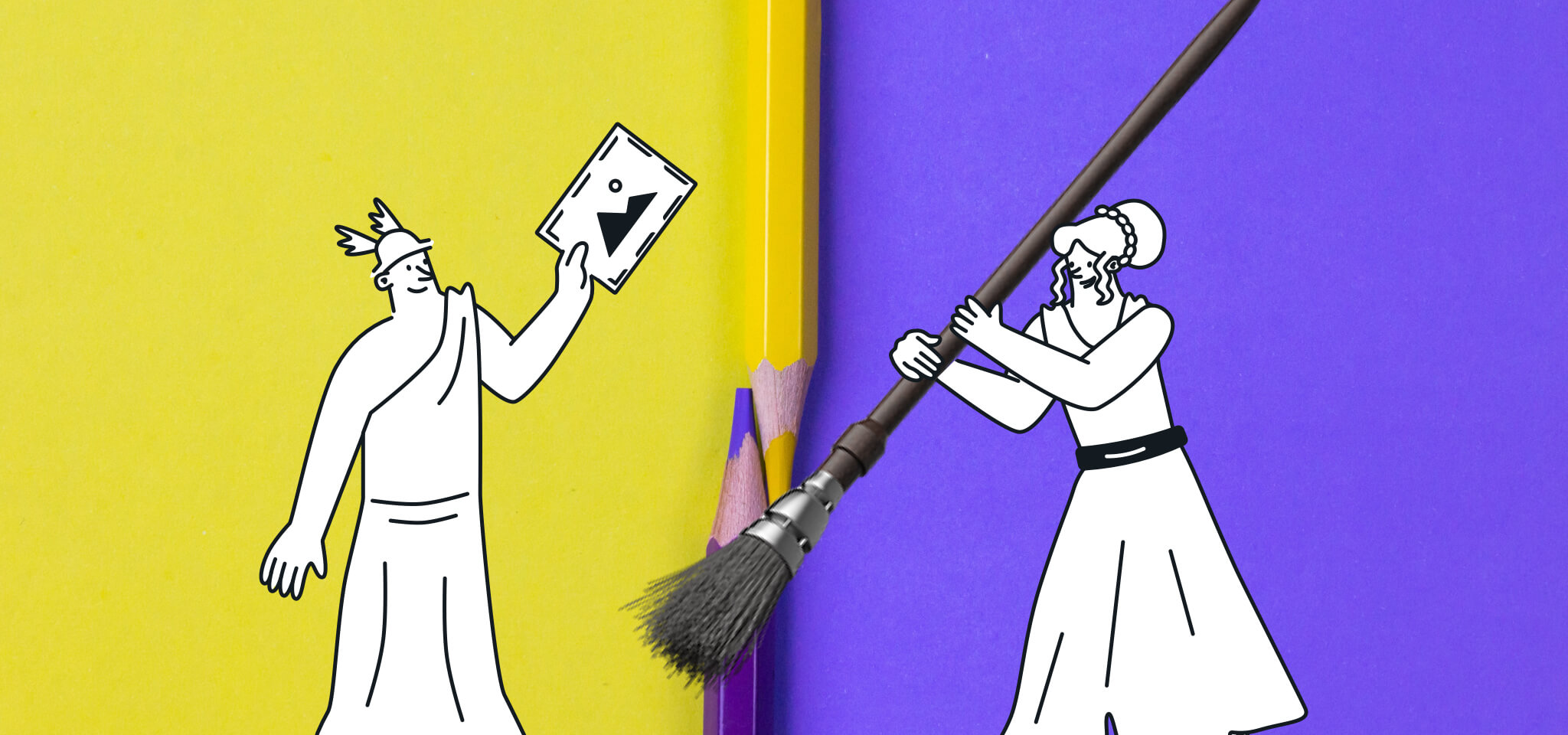
PUBLISHED ON
Really powerful marketing ideas are all born from simple psychological principles. Storytelling may be a popular buzzword now, but the truth is we’re wired to like stories.
They help us better understand the world around us. Children learn social or moral rules through fables, we remember scientific concepts through analogies, and they help us relate to and empathize with others.
When done right, storytelling engages your customer in the long-term, allowing them to relate to your brand’s personality and mission, and feel emotionally invested in your success. 80% of consumers want brands to tell their story but can’t remember a good example. So how do you do it right? There are no hard and fast rules but here are some ideas to help you tell your brand’s story through email.
Table of content
Table of content
What will your story be?
Brand storytelling is essentially storyselling. To stand out from the competition, you have to show your personality and win consumers over with your character.
When deciding how to tell your story, ask yourself what your angle is. Are you disruptive, innovative? A healthier or less expensive alternative? An eccentric, playful persona?
Jack Daniels knows how to storytell. Their angle is: we’re a timeless classic - we’ll always be relevant and funny.
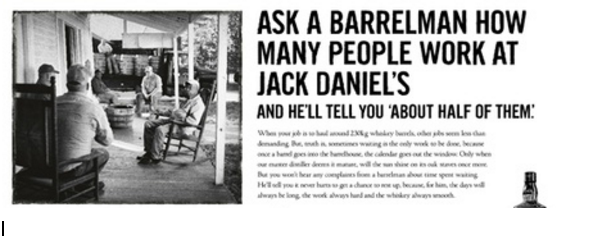
In each ad, they celebrate their history and embrace their traditions. Even with a historical theme, their stories are always relatable. They often mention their employees, showing a human side to the brand, and use a shared sense of humour to connect with their audience.
Start at the very beginning
Every story should have a good introduction. Use a welcome drip series to set the scene. Include a short video to introduce your mission and show your user what you have to offer.
With TOMS, the user can customize their relationship with the brand, choosing which stories they’d like to hear from the get-go. The brand also describes themselves as a ‘movement’ and a ‘family’ - they’re not just a faceless corporation. Their story is one of a community with a strong mission.
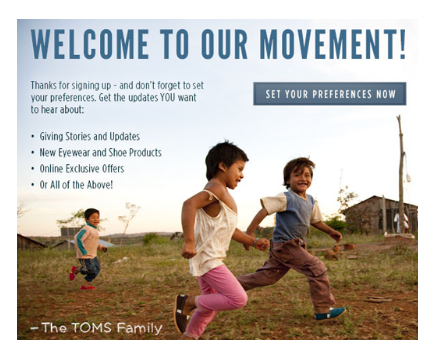
Keep it real
If you’ve ever watched Catfish, you’ll be aware of just how damaging fake images can be to a relationship. To establish trust with your subscribers, don’t use stock images. Welcome your user or celebrate your success with real but professional team photos. We all know when a smile is fake. In testimonial campaigns, use a photo of a customer who’s genuinely happy with your product and support.
Have a look at Uber’s campaign. The company uses a real story -how one of their drivers saved the lives of four people- to build their own. They use the emotional appeal by putting the spolight on their driver’s heroism rather than on the company. They also involve customers by encouraging them to rate their drivers as a sign of recognition. Probably 5 stars won’t do it if the driver saved your life, but it’s certainly a start.
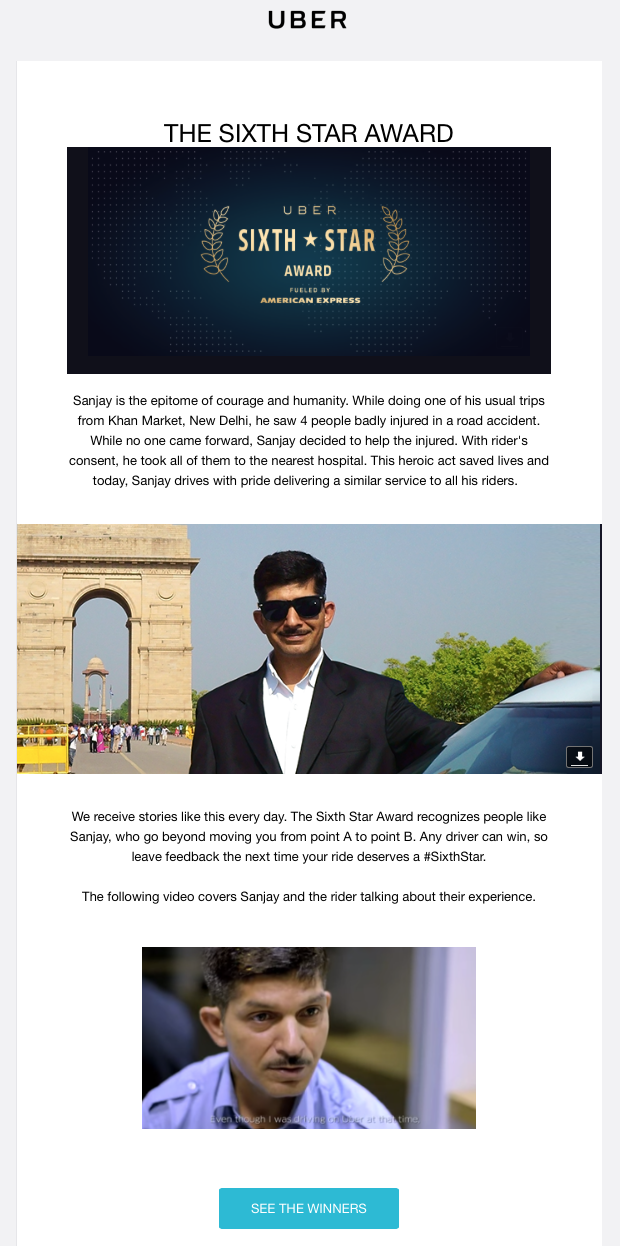
Make your customers’ stories yours
Every tale needs a hero and your customer will be yours. Celebrate milestones (shared and general company ones) with them and they will save you from the SPAM folder. A favourite tactic of American Express is to showcase stories of customers who have used their rewards to achieve success - a different take on the traditional testimonial campaign.
Use all of your channels
Once upon a time, stories were just passed on by word-of-mouth. Now there are so many different ways to tell and spread your message: email is one of them, but you can embed and connect other medias along.
Storytell through video. Video can combine movement, human faces and music - all powerful ways to capture the user’s attention. It also has more potential to go viral on social media than links and text combined. Embedding a video doesn’t have to be tricky either - there’s a workaround.
Spread your story with social (media + proof). Extend your brand’s reach by integrating email and social media and using referral campaigns. This will increase the number of prospects and customers that get to read your story and it will help your company develop a full, cohesive and powerful image that will make your brand stickier.
Now that you’re all set, it’s time to go evangelize customers with your brand story on email. Don’t forget to try different versions of your messages -up to 10 thanks to A/X Testing and segment your contact lists to tell the right story to the right people, so that your recipients are so hooked up on your story that they’ll love you forever and you’ll live happily ever after.
Now it’s your turn to share your story: do you use storytelling as part of your brand identity and marketing strategy? Tweet us your tips or share them in the comment section below!




